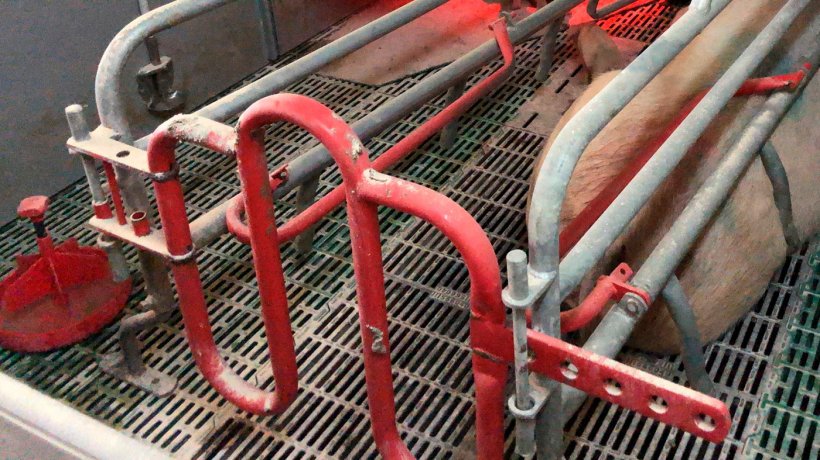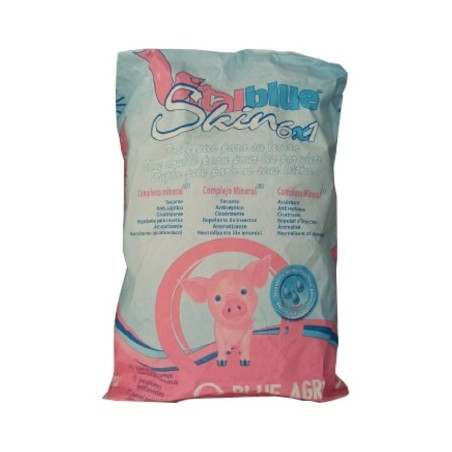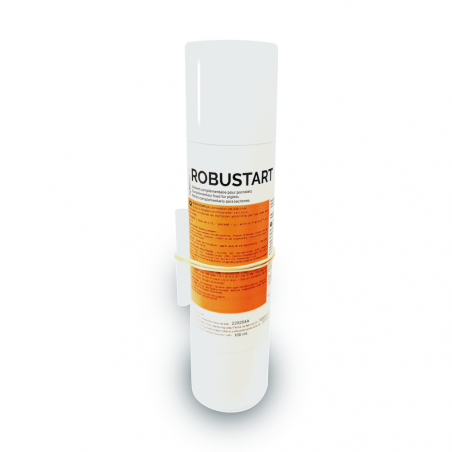Treating the piglets
In Vraeghe's opinion, supplying the piglets with electrolytes in water is the first step. In particular, when diarrhea is caused by rotavirus, this is an indispensable measure to reduce mortality.
If antibiotics are required, he prefers to administer them via the drinking water. They administer the water in additional dishes. He adds that it should be given 2-3 times a day, so that the water remains fresh and clean (Photo 1). In slowly-spreading and individual cases, we inject or orally drench the sick animals with antibiotics. And, on the other hand, in the fast advancing cases, we inject/orally drench them the first time so they are treated fast. Although he admits that it is very effective, they try to avoid it because it involves entering the pens with the risk of spreading diarrhea through footwear.


Photo 1. When using dishes to provide piglets with water, they must be kept clean and water must be added frequently.
Remember that if milk replacer is given during the first few days, it should be taken away if diarrhea appears because it will only make the problem worse.
Ackerman does share Vraeghe's opinion in this case. He tells us that they generally do not make water available in dishes for the piglets. Some people give them milk replacers or water in small milking cups, but in his opinion many times they are a reservoir for disease. Sometimes they put potato starch in dishes in the pens with small piglets.
With regard to viral diseases such as rotavirus, Ackerman says that there are secondary bacterial infections that they try to prevent, so they always start antibiotic treatment.
Cantín is states plainly, there are no new developments in the treatment of diarrhea: water with rehydrating solution and oral or injectable antibiotics are still the best measures. Don't forget about improving environmental comfort, a litter that has diarrhea will be wet and cold. Frequent use of drying powders and adding dry shredded paper will result in piglets being in a better condition to fight the infection.
As for administering active charcoal to piglets, he does not consider it essential, although on some occasions it may help.
Don't forget about the sow
Ackerman reminds us that before treating the piglets, we must make sure that the cause isn't related to the sow or the piglets' environment. Specifically, we must ensure the sow is producing sufficient milk. In some cases administering oxytocin is recommended to stimulate milk letdown.
Checking the sow's health status involves seeing that the sow gets up every day, moves, and defecates, checking that she does not have a fever and if any signs of illness are detected, treating them with the corresponding treatment: steroid or non-steroidal anti-inflammatory drugs and antibiotics if necessary.
He tells us about a very effective measure (in his opinion, a measure used too infrequently): letting the sow leave the pen and walk around the room a little. He admits that this is a laborious and uncommon handling procedure, but it helps the sow to be physiologically "activated" and can be very useful on some occasions.
Cantín also places importance on treating the sow because, when the litter has a problem, the sow will have another: mammary pain because she will not be nursed with enough force and her milk will not be removed. Using anti-inflammatory drugs in the sow will be important, and even using antibiotics in the sow, whether she develops a fever or not, because these hyperprolific sows, with so many piglets farrowed, are more prone to retention, more dystocia, and are manipulated more. The use of post-farrowing prostaglandins may be recommended, depending on the history of the farm.
Vraeghe shares that in some cases that require antibiotic treatment, they prefer the option of preventing diarrhea by insuring a good gut health of the sow around farrowing, since the microbial contamination of the farrowing room will depend largely on what the sow excretes in her feces.
The danger of preventative treatments
Guedes and Vraeghe warn about a frequently used measure: the use of preventive antibiotics in piglets during the first days of life has a negative impact on the microbiota in the animals. In Guedes' opinion the dysbacteriosis that will be caused greatly increases the likelihood of problems caused by Clostridium difficille. He prefers to use probiotics for the piglets as a preventive measure.
When neonatal diarrhea occurs, treating piglets through caring for the sow, rehydration of the piglets, antibiotics, and improved comfort is absolutely necessary but, as described in this series of articles, actual improvement of neonatal diarrhea requires a comprehensive approach, as shown in the summary table (Table 1).
Table 1. A summary of the ten most important points that each of the specialists has discussed in this series of articles, which are very important for controlling neonatal diarrhea.
| 1. | Proper diagnosis of the agents involved. |
| 2. | Necessary prevention through the use of commercial vaccines, and autovaccines. |
| 3. | Controlled oral exposure (feedback) may be necessary in some cases, but should be limited to certain pathologies and should always be done in a controlled manner. |
| 4. | Proper cleaning and disinfection, and sanitary down time between batches are indispensable protocols in controlling diarrhea. |
| 5. | Feed quality in the final phase of gestation and at the beginning of lactation has an impact on the appearance of diarrhea. |
| 6. | Feed and water management should be reviewed when we face these problems. |
| 7. | Make sure the piglets drink enough colostrum. |
| 8. | An improper environment, air currents, etc. are factors that can cause diarrhea. |
| 9. | Rehydration and antibiotics are the most effective treatments. |
| 10. | Don't forget about taking care of the sow. |








